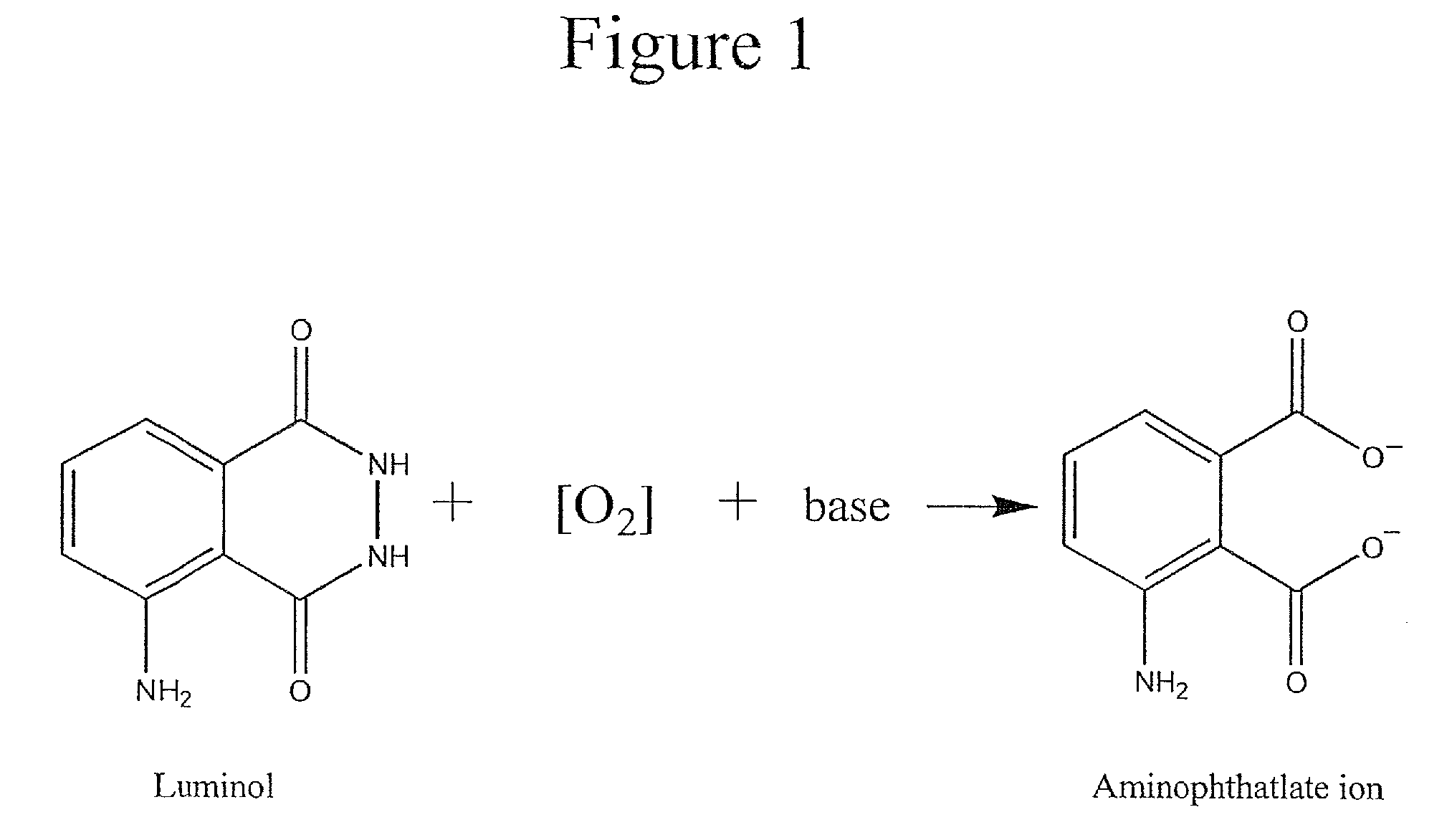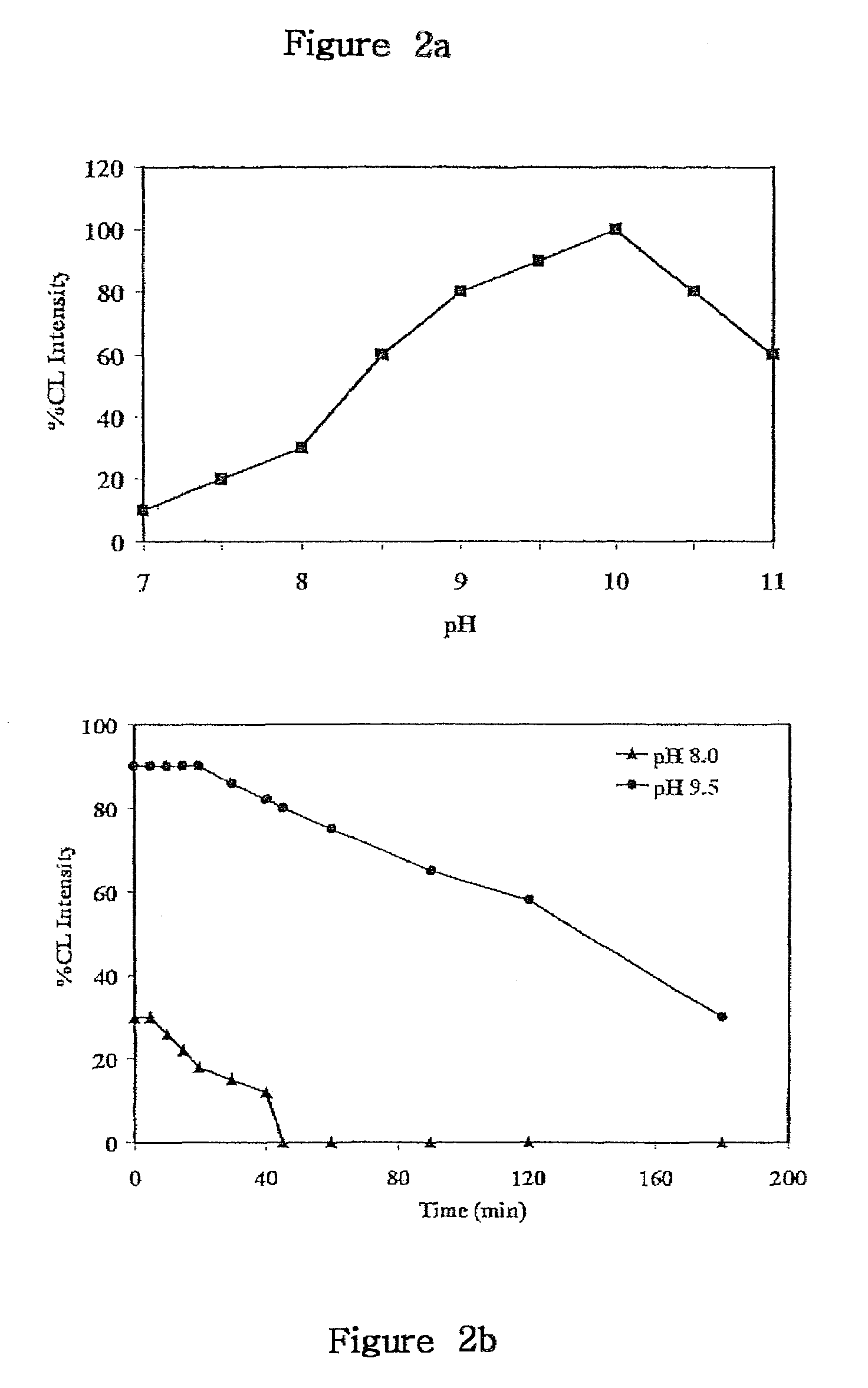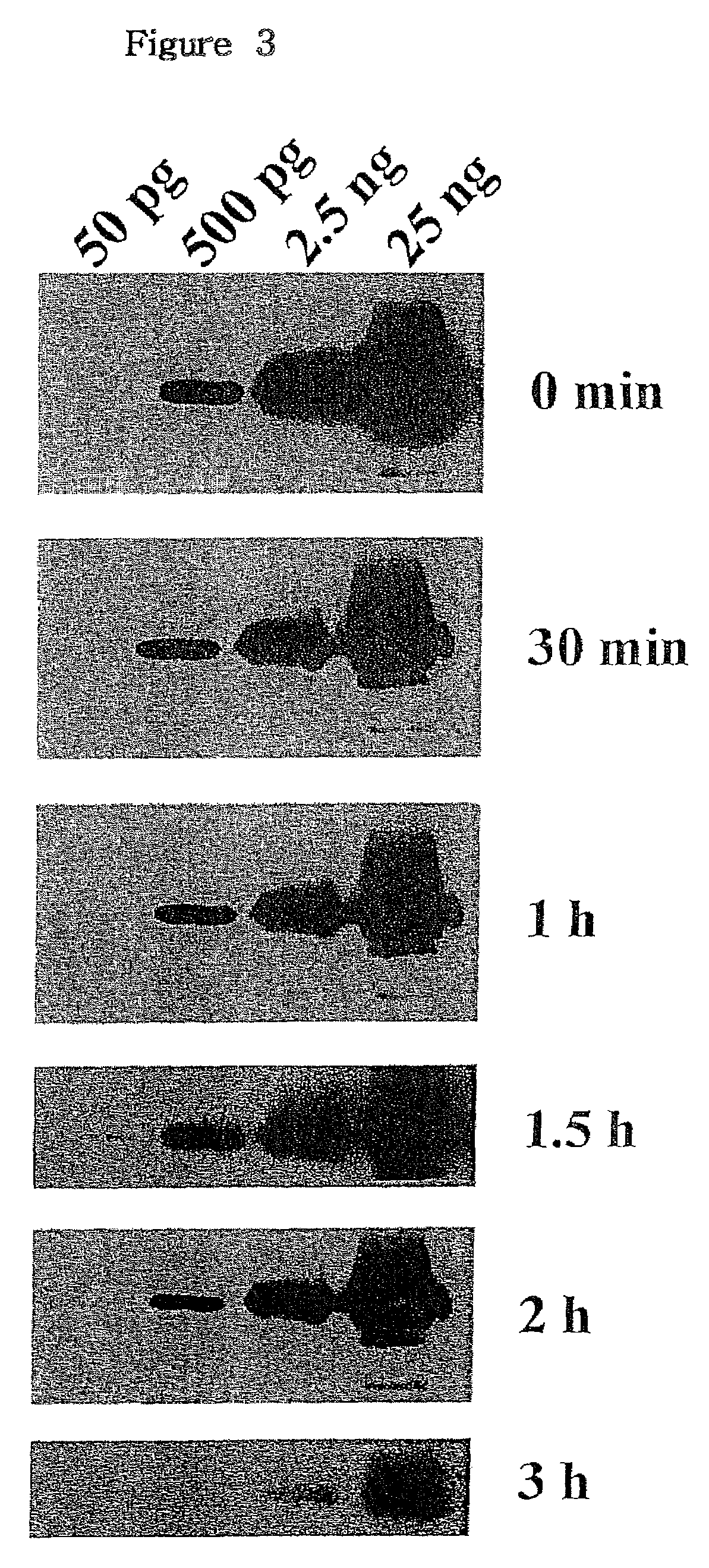Method for improving chemiluminescent signal
a chemiluminescent signal and signal technology, applied in the field of molecular interaction detection methods, can solve the problems of inconvenient western blot results, inconvenient reading out of results, and inability to accurately detect proteins, so as to achieve optimal signal to background ratio and stability, improve chemiluminescent signal, and maximize chemiluminescent intensity and longevity.
- Summary
- Abstract
- Description
- Claims
- Application Information
AI Technical Summary
Benefits of technology
Problems solved by technology
Method used
Image
Examples
Embodiment Construction
[0025]There is provided herein a method for improving a chemiluminescent signal. Improved chemiluminescent signal means improved results for the identification of molecular interactions, specifically protein interactions. Improved chemiluminescent signal is also applicable to DNA research. In one embodiment, a reaction buffer with an alkaline pH range of approximately 9 to provides a maximal chemiluminescent intensity and provides for the longevity of luminol catalyzed by superoxide anions. The addition of carbonate to the reaction buffer provides an optimal signal to background ratio and stability of a chemiluminescent signal from luminol catalyzed by superoxide anions.
[0026]In one embodiment, a method for enhancing a chemiluminescent signal includes the steps of buffering a buffer to a pH of preferably 7 to 10, more preferably of 9 to 10, and most preferably of 9.5, where the buffer includes a buffering agent, a perborate salt and a base, combining the buffer with a working reagen...
PUM
| Property | Measurement | Unit |
|---|---|---|
| pH | aaaaa | aaaaa |
| pH | aaaaa | aaaaa |
| pH | aaaaa | aaaaa |
Abstract
Description
Claims
Application Information
 Login to View More
Login to View More - R&D
- Intellectual Property
- Life Sciences
- Materials
- Tech Scout
- Unparalleled Data Quality
- Higher Quality Content
- 60% Fewer Hallucinations
Browse by: Latest US Patents, China's latest patents, Technical Efficacy Thesaurus, Application Domain, Technology Topic, Popular Technical Reports.
© 2025 PatSnap. All rights reserved.Legal|Privacy policy|Modern Slavery Act Transparency Statement|Sitemap|About US| Contact US: help@patsnap.com



